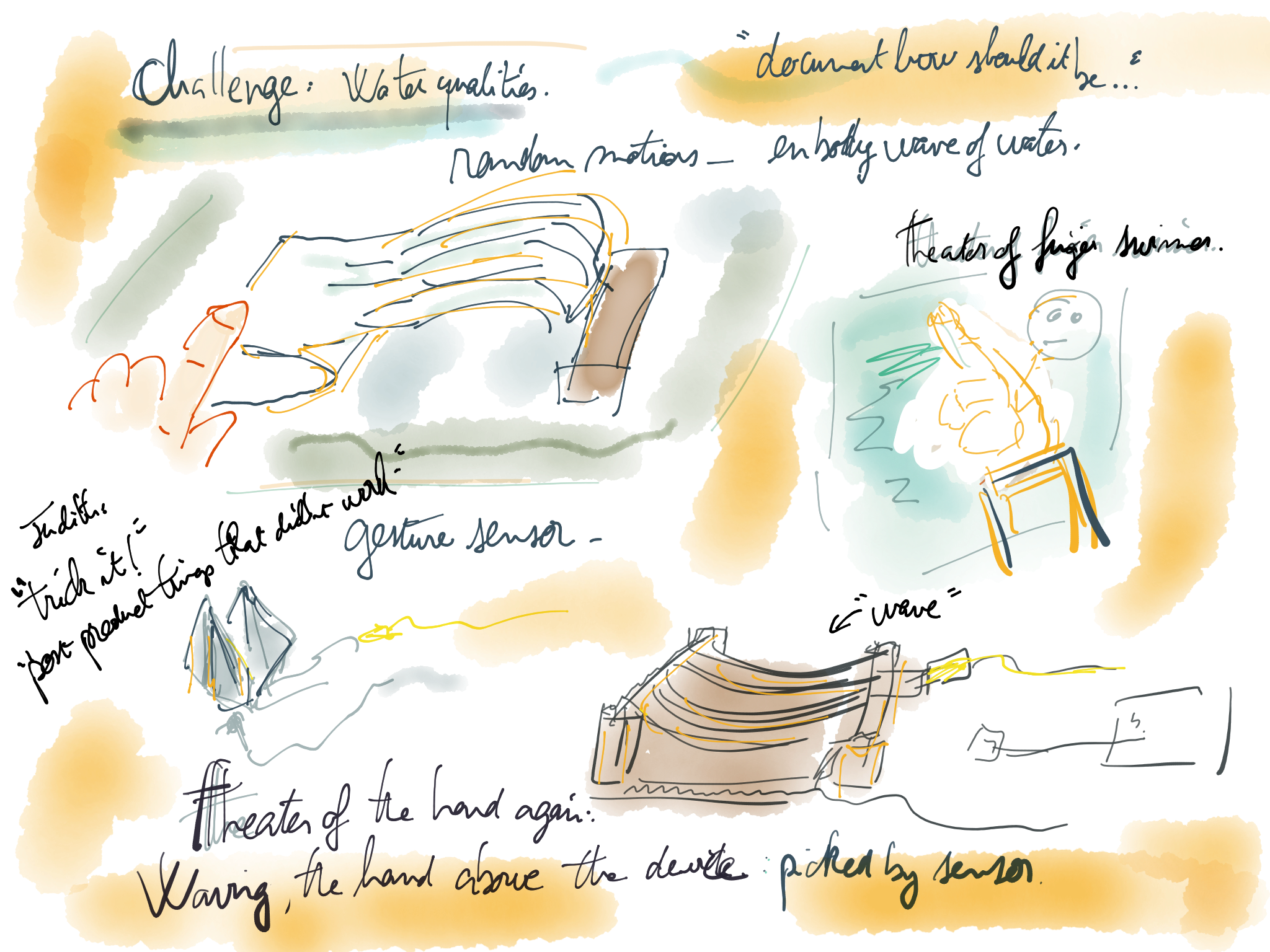Originally invited to present my ongoing design anthropology project on haptic technologies, I’m currently taking part into and observing with great interest the product design seminar of Carola Zwick, taught by Judith Glaser and Felix Rasehorn at the Art School of Berlin in Weissensee. The presentations of week 2 were yesterday.
Prompted to explore the design of sensations, students have been given a cue to work from: an “onomatopoeia” inspired from a poetic sentence that they have picked at random. They have also been given a specific technique to explore: a memory alloy wire that moves when charged up with energy. During a series of “sprints” workshops and presentations, they are making up haptics sensations through forms and motions animated by these “muscle wires.”
This student has built diverse devices to work on the idea of the “rustling” – a sensation that can be translated in sound as well as on tactile sensation. These moving platforms are tilting under the hand of the user, creating an effect of rustling that is remotely reminding me of frolicking in the high weeds in the high summer. Colleagues students suggest to amplify the sound to make it more “rustly.”
Presentations are projected on the screen: an emphasis on the process and on the documentation of the many steps, as well as its narratives, is strongly encouraged by Carola Zwick and by the teaching team. “This is also design research,” says Judith, “things that should now appear on the CV of designers. Also, we train them to maybe continue onto the academic path.” The exercise of making quick design “sprints”, a term borrowed from computer programming, brings the students to explore ideas in their materiality more dynamically: here, a “slithering of the snake” is transduced into paper and muscle wires in many different iterations. On this phase, none of them is satisfying to the student but nonetheless, the “journey” is captivating.
This student is working on the fluidity and qualities of water. How can we translate them into these semirigid materials? The week before, he started from the fascinating folding of a single paper leaf with the muscle wire. Today, he first shows us the motion of a wave through a cut-out paper shape. Using motion sensor, he tries to convey the impression that the gesture of his hand has triggered a wave reaction in the paper material.
“The final product, which is the key feature and the main goal of most other seminars, generally outshines the whole research process. Usually, in the second week, students are working on the mood boards, doing some field research. With us, they are already in the second rounds of presentation.”
The student expressed some humor, gluing a smiley on his hand to simulate the swimmer’s movement with his fingers. “It’s always nice to have to trigger a smile in a presentation”, says Judith. She also advises to speed up the videos, to magnify the phenomenons, and get them to gain some spectacular features. “Trick it!” – however, the subtlest motions are much appreciated, an insider joy exclusive to the specific aesthetics of design researchers and other technical poets (Simondon would probably love it).
Reading an earlier version of this post, Judith thus commented on this point: “Just to make sure: This is about early prototypes where they maybe did not manage to fully implement what they were looking for yet want to communicate a certain quality, aim or finding. Post producing physical prototypes is an appropriate way to argue concepts and make a point. Because a prototype is about communicating ideas it is an »Illustration of concepts –meant to allow the user to imagine and enact the use case to open discussions.« (Massimo Banzi).”
It’s also a way to get better at writing these stories and cultivating the art of presenting the idea. As Carola Zwick pointed out in the previous session: “your clients are going to pay a lot of money for your ideas. So you own them to be able to tell them in a convincing way!”



